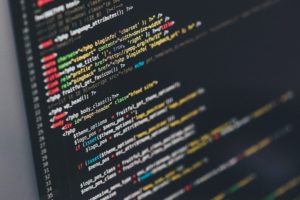Availability and Maintainability
Availability can be defined as the degree to which a system, component or equipment remains in an operable state. In simple words, it is the amount of time during which a system remains functional.
According to BS4778, availability is the ability of an item (under combined aspects of reliability, maintainability, and maintenance support) to perform its required function at a stated instant of time or over a period of time.)
Table of Content
According to Barlow and Proschan (1975) availability of a repairable system is the probability that the system is operating at a specified time t.
Availability is calculated in two ways: A(t), i.e., availability at time t; and A(av), i.e., average availability.
Availability at time t is represented as
A(t) = Pr (item is functioning at time t)
Here, functioning refers to that item which can be operated whenever required.
Average availability represents the mean proportion of time during which an item functioned. It is represented as:
A(av) =MTTF
MTTF + MTTR
Here, MTTF is mean time to failure which represents the average operating time of an item
MTTR is mean time to repair that represents the average down time of an item after its failure.
Different Types of Availability
Availability Inherent (AI)
It is the probability of an item to operate adequately at a specified time under ideal setup and conditions. Inherent availability does not take into consideration logistics time, waiting or administrative downtime, and preventive maintenance downtime while being calculated. It mainly considers corrective maintenance downtime. While calculating inherent availability, those quantities are considered which are under control of the designer. Inherent availability is calculated as
Availability Achieved (Aa)
It is the probability of an item to operate adequately at specified time under ideal setup and conditions, such as the availability of personnel tools, spares, etc. Achieved availability omits logistics time and waiting or administrative downtime, however, it includes active, preventive and corrective downtimes for maintenance.
Availability Operational (Ao)
It is the probability of an item to operate adequately at specified time while being operated in an actual or realistic operating and support environment. Operational availability includes logistics time, ready time and waiting or administrative downtime. Moreover, it also involves preventive and corrective maintenance downtime. Operational availability is calculated as:
Here, MTBF means time between failures is the average time between successive failures.
MDT means down time is the total down time of an item.
Concept of Maintainability
Maintainability can be defined as a measure of probability that a failed machine, equipment or system can be restored back to its functional state within a specified time period by incorporating pre-defined methods and procedures. According to BS4778, maintainability is the ability of an item, under stated conditions of use, to be retained in, or restored to, a state in which it can perform its required functions, when maintenance is performed under stated conditions and using prescribed procedures and resources.
While developing maintainability programme, the first step is to define all the related tasks and requirements to develop a maintainability model. Based on the requirements a maintainability criteria is defined which consists of:
- Defining and embedding all built-in and self-testing capabilities.
- Administering the performance of equipment without using any extra test tools or equipment.
- Establishing fault isolation points to reduce repair time.
- Making attachment of major assemblies assessable and interchangeable without making any maintenance adjustments.
Once the design criteria are established, the next step is to translate system level operational and maintenance requirements into equipment design requirements.
For this, maintainability analysis is conducted, which provides:
- A comprehensive list of precise maintainability requirements to be met during design phase
- Check points to assure the meeting of all the requirements mentioned above
- A summary of fundamental maintenance functions and support requirement for the performance of the system
The last step in maintainability programme is to prepare design and performance specifications for the system. The system designer must ensure that adequate maintainability requirements have been incorporated in these specifications through maintainability allocation. It mainly consists of defining and evaluating the contribution of active down time of all components against established mean time to repair.
The aim of maintainability programme is to establish maintainability prediction to project the number of hours the equipment is down while being in maintenance. Maintainability prediction helps system engineer to uncover the areas on improvement in design of the product and incorporate maintainability through available techniques





